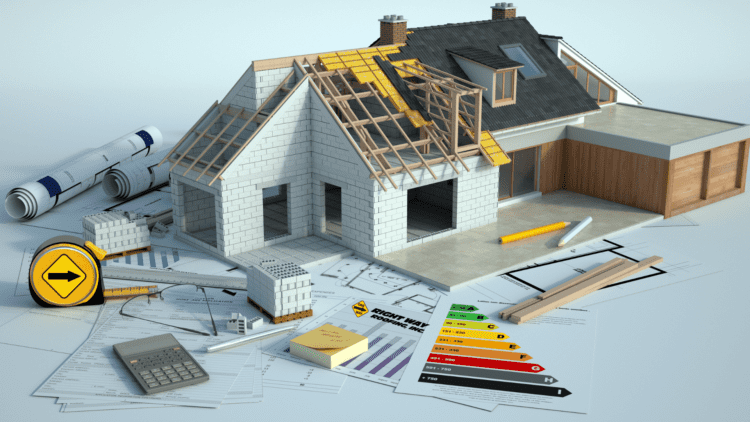Have a Pitched Roof? Here’s Everything You Need To Know & More
You may not think about the roof over your head, but imagine you were in a building or home without one. Pretty weird, right? A roof is more than essential, but few people know the anatomy of one. If you’re interested in learning about your roof, including pitched roofs, then Right Way Roofing is here to help. In this blog, we’ll go over the ins and outs of a roof and the importance of roof inspections and cleanings.
Service Areas
At Right Way Roofing, we offer our services to residential and commercial properties in Phoenix, Tempe, Mesa, Chandler, and even the West Valley, including Glendale, Surprise, and Peoria.
Don’t see your city? Call us to see if we service your area.
What Is a Pitched Roof?
A pitched roof is a type of roof characterized by its steep slope or angle. Unlike flat roofs, which have minimal to no slope, pitched roofs have a noticeable incline. This incline is created by the roof’s rafters, which rise at an angle from the walls of the building to meet at the ridge or peak of the roof. These roofs are sought after for their durability and longevity, making them the most common residential roof style in Arizona.
Various Roof Shapes
Your home or business in Arizona may have a unique roof structure, but our professionals can take on any roof shape, including:
- Mono-Pitch Roofs
- Double Pitch Roofs or Gable Roofs
- Hip Roofs
- Flat Roofs
- Purlin Roofs
- Slant Roofs
- Couple Roofs
- Couple Close Roofs
- Collar Beam Roofs
- King Post Roofs
The most common roof types in Arizona are variations of pitched roofs, where two or more sides of the roof meet at the top to form a tent-like shape.

What Makes up a Roof: Your Roof’s Components
If you’ve been scrolling through our website or other roofing pages, you may have come across some roofing terms that you’re unfamiliar with. There are many components that make up a roof; the most common ones you should know are:
Roof Shingles
Roof shingles serve as the primary shield for your roof. They’re flat pieces that are laid on top of each other until the entire roof’s surface is covered. The most common material for shingles is asphalt due to its superior qualities. However, roofing shingles can also be made of fiberglass or wood based on your aesthetic preferences.
Eaves
Eaves are the overhanging edges of a roof, designed to direct rainwater away from the building’s exterior walls. They also offer sun protection (which is crucial in Arizona) and can be decorated for architectural flair.
Soffit
Soffits are horizontal strips of timber located beneath the eaves. Soffits facilitate adequate ventilation through soffit vents to circulate air in the building. Keep in mind that soffits are prone to water damage if gutters are insufficient or the building’s waterproofing is subpar.
Flashing
Flashing in a roof consists of metal strips installed to seal joints between roof coverings and other structural elements. Flashings prevent moisture from entering a wall and roof through joints in copings, parapet walls, and other penetrations through the roof plane.
Ridge
The ridge is considered the highest point where two roof slopes meet in a roof. It’s important to make sure this area has a watertight seal since it’s susceptible to weather damage.
Fascia
The fascia of a roof describes the board or foundation that attaches to the trim of a roof. The fascia connects the walls to the rafters, and the gutters to the roof. The most common and cheapest fascia material is wood, but it’s also the most susceptible to water damage, rot, and deterioration.
Rafter
Critical for pitched roofs, rafters support the roof’s structure and help regulate attic temperature. Wooden rafters are common in residential construction, while steel is preferred for commercial buildings.
Drip Edge
Drip edge encourages proper drainage by guiding rainwater into the gutters or away from the fascia. This is an important component of your roof that prevents damage.
Underlayment
The function and importance of underlayment vary depending on whether it’s a tile or shingle roof. While quality and durability are important for both types of roofs, tile roofs can encounter issues such as cracks or missing tiles, relying on the underlayment to function as the roof system and protect against water leaks.
Understanding these different roofing terms will help you not only understand what’s covering your head but the next time you need a cleaning or repair service, you’re equipped with the right knowledge.
Learn About Your Roof With Right Way Roofing
Knowing roof terminology empowers home and business owners to make informed decisions. If you need assistance with an issue, our team offers extensive roofing repair services in Phoenix and the surrounding areas.
At Right Way Roofing, we want to assist Arizona locals with their roofs, no matter the size, shape, or style. We will guide you through our roof inspection process and ensure a thorough evaluation of every component of your roof.

